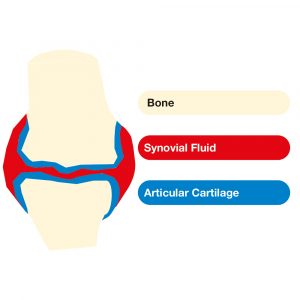Joint health in horses how can we help?
Horses in competition go through a variety of movements and activities, putting their muscular and skeletal systems under constant stress. As a result, joint injuries and lameness are a prevalent problem, often resulting in the athletic horse's career being cut short. In addition to affecting performance, pain and immobility can have a negative impact on quality of life and lifespan.
Simply put, a joint is the connection of two or more bones that allows the skeleton to move with the help of muscles and tendons. The synovial joint (found in the fetlock, knee, and stifle) is the most usually affected joint in the horse's body, as indicated below. Because synovial joints are the most active joints in the horse's body, they are prone to damage. They are made up of two bone ends coated in articular cartilage, which is so smooth and robust that it allows frictionless joint movement when properly lubricated. The capsule of the joint contains synovial fluid. The joint is lubricated by this substance. Sodium hyaluronate is a crucial component of synovial fluid, providing a medium for transferring nutrients within the joint as well as the viscous fluid needed for smooth movement and pressure transfer. Maintaining the form and function of the articular cartilage covering the ends of the bones is critical for a synovial joint to operate normally, painlessly, and efficiently. The outer layer of the articular cartilage is degraded and replaced with a new healthy lining in normal, healthy joints to preserve healthy joint function. The smooth cartilage lining begins to disintegrate at a rate that cannot be replaced by healthy new cartilage due to insufficient blood supply and frequent movement of synovial joints. As a result, a series of negative events occur within the joint, leading to osteoarthritis and jeopardising future joint health and function.

Osteoarthritis is characterised by articular cartilage deterioration and is a common cause of lameness in working horses. Osteoarthritis is caused by the degeneration of the articular cartilage.
Studies investigating the treatment of osteoarthritis have shown benefit in providing the following components:
- Glucosamine Sulphate; assists cartilage formation/repair and reduces the formation of inflammatory mediators thereby reducing joint pain associated with osteoarthritis.
- Chondroitin Sulphate; inhibits the enzymes associated with cartilage degeneration.
- Manganese Chelate; necessary for the production of synovial fluid (joint lubricant).
- Bioavailable Curcumin- A powerful natural anti-inflammatory.
- MSM- A natural anti-inflammatory. https://www.aussiesaddlery.com.au/msm-1kg/
- Vitamin C- Which is essential for the health of cartilage and connective tissues
- Apple cider Vinegar has been documented as being helpful fed daily for joint issues. https://www.aussiesaddlery.com.au/nrg-apple-cider-...
Osteoarthritis is a disease that cannot be cured, and the goals of treatment are to relieve pain, prevent cartilage deterioration, and return afflicted joints to as close to normal function as possible.
Preventative methods, such as providing glucosamine and chondroitin to young horses before they show signs of joint damage, are recommended. The goal is to slow the irreversible articular cartilage deterioration that leads to osteoarthritis. Older horses and horses on pasture near the coast are recommended to have a supplement of calcium and magnesium to help support joint health.https://www.aussiesaddlery.com.au/kohnkes-own-cal-...
A comprehensive management or treatment plan that includes an oral glucosamine and chondroitin supplement like Flexi Joint Plus or Epitalis Forcyte which are both available in store rather than on line.
Supporting Performance and older horses after work with clay poultice products removes swelling and helps with joint pain. Products such as the Tuff Rock which Indicates rate of injury recovery and identifies problem areas simply by observing wet and dry patterns over a 45 minute period. Poultice remains damp longer on injured areas, non-injured areas dry normally. https://www.aussiesaddlery.com.au/tuffrock-poultic... Swell Down is another clay poultice The fast-acting combination of wet montmorillonite clay, essential oils and minerals in SwellDOWN has a cooling effect on the skin. Heat produced by heavy work or injury is drawn out at a rapid rate, aiding in recovery and preventing damage to the soft tissue. SwellDOWN’s unique formula should be used post training as a preventative to aid in tightening loose joints. https://www.aussiesaddlery.com.au/kelato-swelldown...

